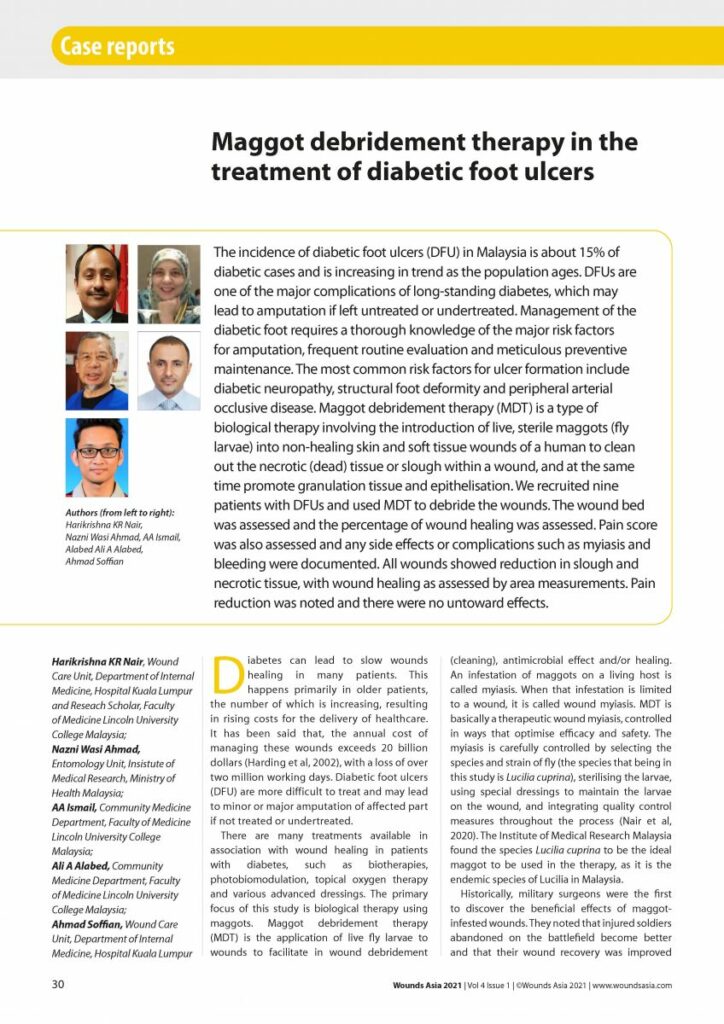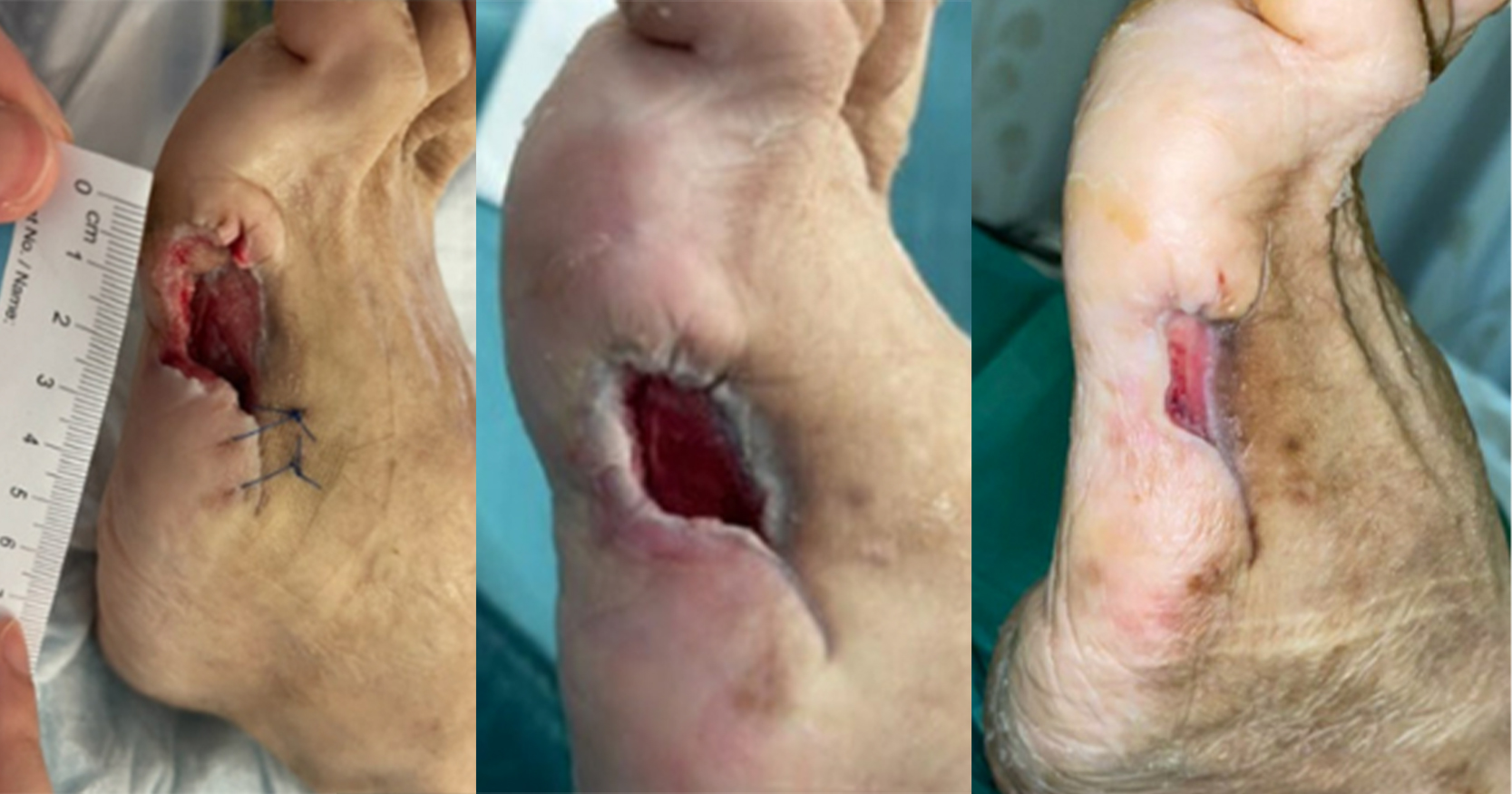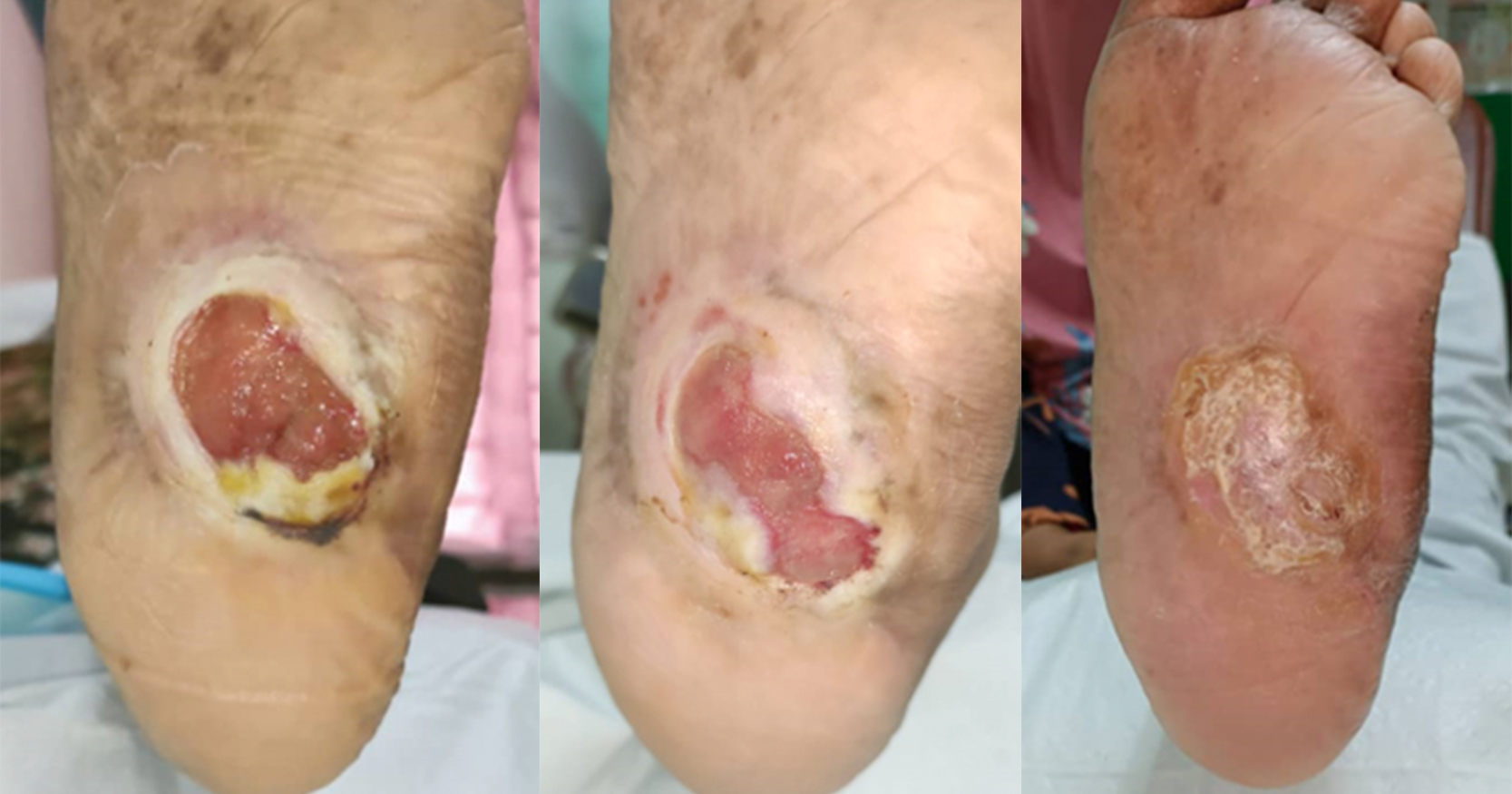The incidence of diabetic foot ulcers (DFU) in Malaysia is about 15% of diabetic cases and is increasing in trend as the population ages. DFUs are one of the major complications of long-standing diabetes, which may lead to amputation if left untreated or undertreated. Management of the diabetic foot requires a thorough knowledge of the major risk factors for amputation, frequent routine evaluation and meticulous preventive maintenance. The most common risk factors for ulcer formation include diabetic neuropathy, structural foot deformity and peripheral arterial occlusive disease. Maggot debridement therapy (MDT) is a type of biological therapy involving the introduction of live, sterile maggots (fly larvae) into non-healing skin and soft tissue wounds of a human to clean out the necrotic (dead) tissue or slough within a wound, and at the same time promote granulation tissue and epithelisation.






